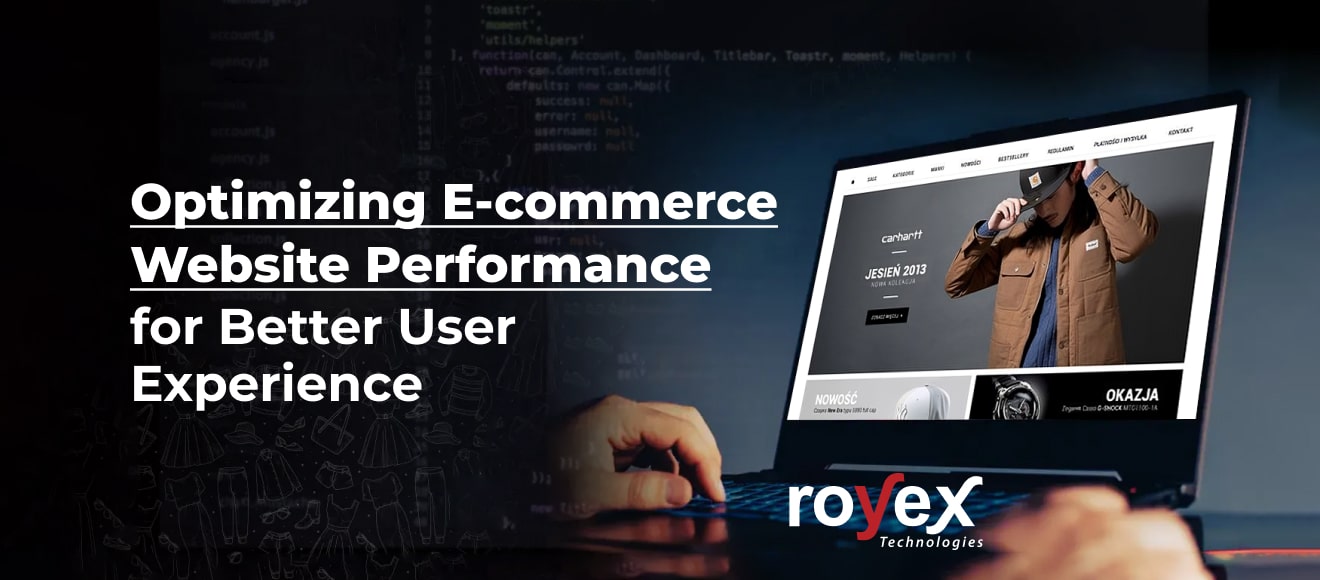
Optimizing E-commerce Website Performance for Better User Experience
In the rapid development of online shopping, a good e-commerce website can greatly improve user experience and change conversion. Predictions for 2027 show that e-commerce sales could make up 24% of total global retail sales, a rise from 19.7% in 2023. Customers want websites to load fast, run smoothly, and present them with a flawless experience from the start till they check out products or services. Research shows if there is even a 1-second delay in the time a page it can decrease conversions by 7%. This small delay could potentially result in billions of dollars' worth of lost income e-commerce sites each year. A sluggish and difficult to use website can annoy users which increases bounce rates and may end in lost sales. Furthermore, by 2025 it is expected that mobile commerce will make up almost half (43.4%) of all e-commerce sales. So it is important to optimize performance for mobile devices too. On the other hand, a quick running site that provides an effortless journey for users will not only increase conversions but improve its visibility on search engines too. By putting into action good performance optimization strategies you could potentially increase conversion rates by up to an impressive 35% while reducing bounce rates by half (50%). These large changes will have a significant effect on an e-commerce site's bottom line or net income in what's becoming an intensely competitive digital marketplace.
This article offers key strategies for optimizing performance on your e-commerce website to ensure your user's experiences are positive ones.
1. Improve Page Load Speed

Why It Matters:
Page load speed is critical for user satisfaction. A delay of even a few seconds can lead to higher bounce rates and lost sales. Studies show that a one-second delay in page load time can reduce conversions by 7%.
How to Improve:
Optimize Images: High-quality product images are crucial for e-commerce, but they can also slow down your site. Implement the following image optimization techniques:
- Compress images without sacrificing quality.
- Use appropriate file formats (JPEG for photographs, PNG for graphics with transparency).
- Implement lazy loading to defer off-screen images.
- Utilize responsive images to serve different sizes based on device screen size.
Minimize HTTP Requests: Reduce the number of elements on your page that require requests, such as scripts, images, and CSS files. Use tools like HTTP/2 to multiplex requests over a single connection. Each element on a webpage requires an HTTP request. Minimize these by:
- Combining multiple CSS or JavaScript files.
- Using CSS sprites for images.
- Removing unnecessary plugins or scripts.
Leverage Browser Caching: Set up caching rules to store static resources on users' devices, reducing the need for repeated downloads. Also this reduces the number of HTTP requests and speeds up subsequent page loads for returning visitors.
Use a Content Delivery Network (CDN): Content Delivery Networks spread your website's non-changing data across many servers all over the world. When a person visits your site, this data provided from the closest location, which lessens load times greatly. CDNs are extremely useful for e-commerce sites that have customers from all around the world.
Minify and Compress Code: By making HTML, CSS, and JavaScript files smaller, you eliminate unneeded characters. This shrinks the size of the file. For an extra step, allow GZIP compression on your server. This action cuts down on data moving between the server and browser.
Optimize Database Queries: Inefficient database queries can significantly slow down your site. Optimize your database by:
- Indexing frequently accessed data.
- Cleaning up unnecessary data and outdated records.
- Using query caching where appropriate.
Implement Asynchronous Loading: Load non-critical resources asynchronously to avoid any delay in showing up your primary content. This is very important for third-party scripts like tools for data analysis or social media features.
Reduce Server Response Time: Improve your server's response time by:
- Upgrading your hosting plan or switching to a more robust hosting provider.
- Implementing server-side caching.
- Optimizing server-side code and database queries.
Enhance Mobile Performance

Why It Matters:
With a significant portion of e-commerce traffic coming from mobile devices, optimizing for mobile performance is crucial. A mobile-friendly site ensures that users have a seamless experience regardless of their device.
How to Improve:
Responsive Design: Ensure your website adjusts smoothly to different screen sizes. Use flexible grids and images to create a responsive layout.
Accelerated Mobile Pages (AMP): Implement AMP to create lightweight pages that load quickly on mobile devices.
Optimize Mobile Navigation: Simplify menus and use larger touch targets to improve usability on smaller screens.
3. Streamline the Checkout Process
Why It Matters:
A complicated checkout process can lead to cart abandonment. Streamlining this process improves user experience and boosts conversion rates.
How to Improve:
Guest Checkout: Allow users to make purchases without creating an account. Offer guest checkout options to reduce friction.
Minimize Form Fields: Only ask for essential information. The fewer the fields, the faster the checkout process.
Progress Indicators: Use progress indicators to show users how many steps are left in the checkout process.
Multiple Payment Options: Offer various payment methods to cater to different preferences and increase the likelihood of completing the sale.
4. Optimize for Search Engines
Why It Matters:
Search engine optimization (SEO) increases the amount of organic traffic on your site. It also improves experience by delivering important content fast.
How to Improve:
Keyword Optimization: Include appropriate keywords in product details, meta-tags, and headlines.
High-Quality Content: Develop useful content that addresses user's queries and offers solutions.
Structured Data: Apply schema markup to make it easier for search engines to comprehend your content and enhance rich snippets.
5. Enhance Security
Why It Matters:
Security is paramount for e-commerce websites. Users need to trust that their personal and payment information is safe.
How to Improve:
SSL Certificates: Ensure your site uses HTTPS to encrypt data and protect user information.
Regular Security Audits: Conduct regular security audits to identify and fix vulnerabilities.
Two-Factor Authentication (2FA): Implement 2FA for user accounts to add an extra layer of security.
6. Implement Effective Site Search

Why It Matters:
An effective site search feature helps users find what they are looking for quickly, improving their overall experience and increasing the likelihood of a purchase.
How to Improve:
Autocomplete: Use autocomplete to suggest popular products and categories as users type.
Advanced Filters: Provide filters to narrow down search results based on various criteria like price, brand, and ratings.
Error Tolerance: Implement error tolerance to handle typos and misspellings in search queries.
7. Monitor Performance and Gather Feedback
Why It Matters:
Keep a constant check on your site performance with the help of tools such as Google PageSpeed Insights, GTmetrix, or Pingdom. These tools offer important suggestions and tips to enhance the site. Regular checking and feedback from users can highlight areas that have room for development and indicate where site performance may be slow.
How to Improve:
Analytics Tools: Use tools like Google Analytics to track site performance, user behavior, and conversion rates.
User Feedback: Collect feedback through surveys and reviews to understand user pain points and preferences.
A/B Testing: Conduct A/B tests to compare different versions of your site and determine which changes improve performance and user experience.
Conclusion
Improving the performance of an e-commerce website is a continuous task that involves attention to different technical parts. These strategies can greatly better your site's speed, response time, and overall user experience. This could result in more active users, more conversions, and eventually, a more prosperous e-commerce operation.
Note that even slight site performance enhancements can affect user happiness and profits significantly. Make site performance improvement a core element of your e-commerce plan to keep up with the rapidly changing online retail industry.
Established in 2013, Royex Technologies is a leading E-Commerce Web Design Company in Dubai that provides innovative solutions for small, medium, and large-scale companies. We specialize in responsive web development, mobile app development, CRM integration, AI solutions for website & mobile applications, and many more. Our extensive experience in mobile app development will help you to take your business to a high level.
Check our portfolio to see our previous works. Contact us via email at info@royex.net or call us at +971566027916 to get started with us.





